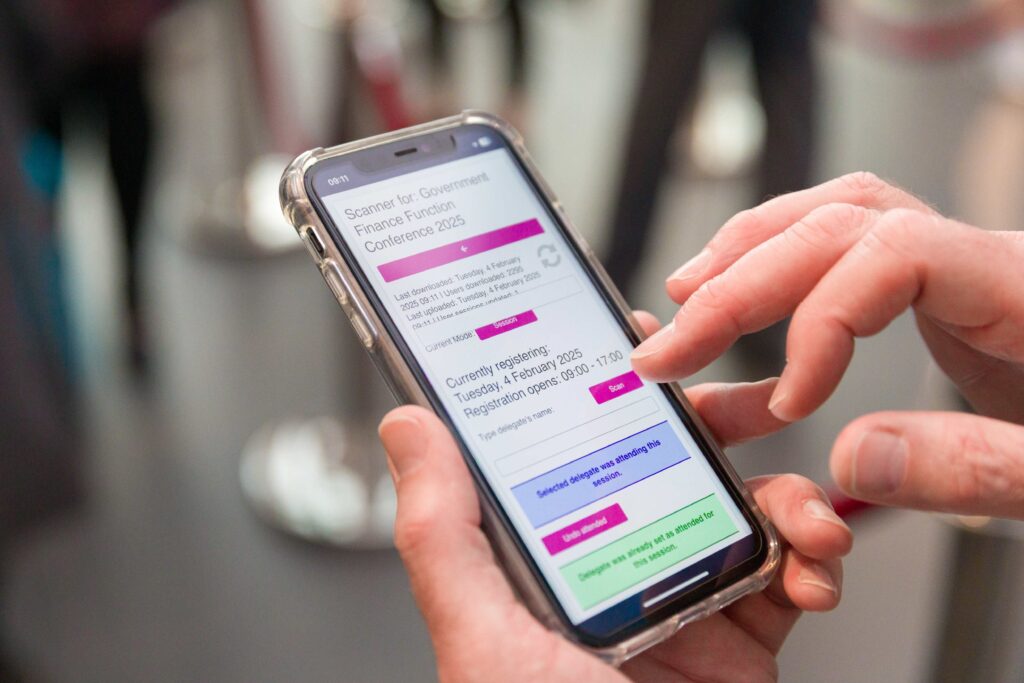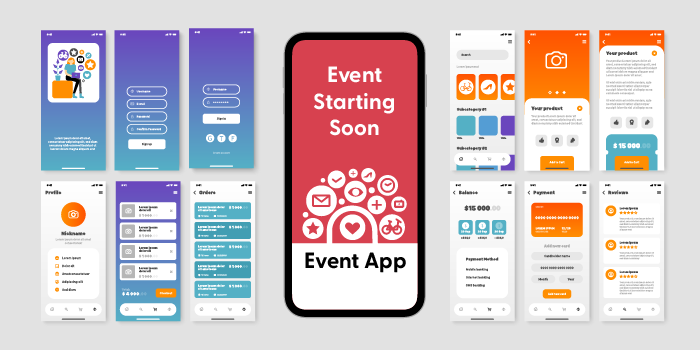Switching your event management platform might feel daunting, but the right move can unlock better experiences, smarter insights, and more efficient events.
Switching your event management platform is a significant decision for any business, especially in the B2B events space. Whether driven by technological limitations, evolving event needs, or frustrations with your current provider, deciding to change platforms can transform your event experiences—but only if done well.
This article explores the benefits of switching event management platforms, common pitfalls to avoid, and practical steps for ensuring a smooth transition.
So, Why Consider Switching Your Event Platform?
Businesses typically consider switching event management software for several key reasons:
1. Evolving Event Needs
As your events grow in scale or complexity, your current event management system may no longer meet your requirements. Platforms initially chosen for smaller events might struggle to manage larger audiences, more sophisticated event structures, or emerging formats like hybrid or fully virtual events.
2. Poor User Experience
A clunky user experience with event management software directly impacts attendee satisfaction and overall engagement. Outdated, slow, or complicated platforms frustrate attendees and organisers alike, potentially harming your brand’s image.
3. Limited Integration Capabilities
Fragmented event management systems that don’t integrate smoothly with your existing CRM, marketing, or financial tools cause inefficiencies. Manual data transfers and incompatible systems can lead to costly mistakes and wasted time.
4. Inadequate Analytics
A strong event management platform should offer robust analytics. Detailed insights into attendee behaviour, session popularity, and engagement metrics are vital for demonstrating event ROI and making informed improvements.
5. Reliability and Support Issues
Frequent technical glitches or inadequate support during crucial event periods erode trust in your current provider. Businesses need a dependable platform, especially for high-stakes events where reliability is paramount.

Benefits of Switching Event Management Platforms
Switching platforms, while initially challenging, can offer significant long-term advantages:
Improved Attendee Experience
Modern event platforms prioritise user-friendly interfaces and intuitive navigation. Attendees benefit from smoother registration processes, seamless on-site or virtual event participation, and interactive elements like live polling and networking features, enhancing overall satisfaction.
Enhanced Event Analytics
Comprehensive reporting tools provide valuable data insights, enabling you to track attendee engagement, identify successful sessions, measure conversion rates, and demonstrate clear ROI to stakeholders. Platforms like Envoku take this a step further by layering in behavioural and personality-based data, helping you understand not just what attendees are doing – but why.
Better System Integrations
Advanced event management platforms are designed to integrate effortlessly with other business systems, including CRM, marketing automation, and finance platforms, streamlining processes and reducing manual workloads.
Expanded Event Capabilities
Need to go virtual, hybrid, or interactive? Switching platforms allows businesses to embrace these new event formats, such as hybrid or virtual experiences. These platforms offer integrated tools for live streaming, virtual networking, and remote attendee engagement, expanding your event’s reach and accessibility.
Cost and Efficiency Gains
Consolidating your fragmented tech stack into a single, comprehensive platform can significantly reduce costs and increase efficiency. Automation features reduce the need for manual tasks, freeing your team to focus on higher-value activities.
Common Pitfalls When Switching Platforms
Despite clear benefits, transitioning to a new event management platform comes with potential pitfalls:
Data Migration Challenges
Moving large volumes of historical event data can be complex. Poorly managed migrations risk data loss or corruption, leading to inaccuracies or operational disruptions.
Resistance to Change
Stakeholder buy-in is crucial. Without clear communication of the reasons and benefits of switching, internal teams might resist or struggle to adapt to new workflows and processes.
Steep Learning Curves
Every new platform introduces a learning curve. Insufficient training or rushed implementations can cause confusion, errors, and frustration among event teams and attendees.
Integration Problems
Ensuring your new platform integrates smoothly with existing systems can be challenging. Without careful planning, you may experience temporary disruptions in data flows or require additional technical support to achieve full integration.
Poor Timing
Switching event platforms close to important event dates increases risk. Poor timing or inadequate transition planning could jeopardise the success of upcoming events, creating additional stress and potential failure points.
How to Know When It’s Time to Switch
Considering a switch requires a thorough evaluation of your current system’s performance. You may need a new event management system if:
- You experience frequent technical issues: Regular platform downtime or errors affecting event execution.
- You receive poor feedback from attendees or staff: Negative feedback from attendees or internal users.
- Your platform offers limited data and reporting capabilities: Difficulty accessing meaningful analytics.
- Your current platform is complex to integrate: Excessive manual processes or fragmented tool usage.
- Manual processes dominate your event setup and execution: Clear signs that current tools limit your team’s productivity and innovation.
If these challenges sound familiar, exploring new platform options could significantly enhance your events.
Best Practices for a Smooth Platform Transition
Ensuring a successful switch requires careful planning and execution:
1. Align Stakeholders
Engage key stakeholders early, clearly communicating the reasons and benefits of switching. Gain buy-in from event teams, senior management, IT, marketing, and other affected departments.
2. Define Event Platform Requirements
Create a detailed list of your requirements before evaluating new platforms. Consider factors like scalability, user experience, integration capabilities, analytics features, support levels, and security standards.
3. Build a Transition Plan
Develop a clear, phased transition plan that includes timelines for data migration, training, system testing, and go-live dates. Avoid making the switch immediately before major events to minimise risk.
4. Manage Data Migration Properly
Clearly define the data you need to migrate. Conduct test migrations and validate data integrity at each step to prevent loss or corruption. Partner closely with your new vendor’s support team to ensure accuracy.
5. Offer Training and Support
Provide thorough training sessions and resources to help your team adapt quickly to the new platform. Consider appointing internal “platform champions” who can assist colleagues and facilitate smoother adoption.
6. Communicate and Roll out Gradually
Inform attendees, speakers, and partners of any user-facing changes well in advance. Implement the new platform gradually—perhaps starting with a smaller, low-risk event—to identify issues and build confidence before fully transitioning larger events. Tools like Envoku can help personalise the experience during this phase by tailoring content and engagement tactics based on audience data, especially useful if you’re also looking to improve the way attendees interact with your new system from day one.
7. Monitor and Adjust
Post-transition, monitor feedback closely and be prepared to adjust processes or seek further training as needed. Ongoing evaluation helps maximise your new platform’s benefits, ensuring it continues to meet your evolving needs.
Final Thoughts
Switching your event management platform isn’t just a tech upgrade – it’s a strategic decision that, when executed correctly, can significantly enhance your event operations and attendee experiences.
By understanding the benefits, acknowledging potential pitfalls, and following a structured transition plan, businesses can confidently navigate platform changes.
Ultimately, a well-managed switch empowers your organisation to deliver events that are more engaging, efficient, and impactful, driving sustained success in your event strategy.
Ready to take the stress out of event planning?
Chat to us today about how our event management services can help bring your next event to life – on time, on budget, and beyond expectations. Whether you need full-scale delivery or targeted support, Live Group is here to help.
Common signs include frequent technical issues, outdated interfaces, poor analytics, and lack of integration with your other systems.
Prioritise scalability, user experience, integration capabilities, analytics tools, and responsive support.
It depends on your data, the platform’s complexity, and your internal readiness. With planning, smaller organisations can transition in a few weeks; larger ones may take months.
Yes, but it’s crucial to test the migration process and verify data integrity. Work closely with your new provider for a smooth transition.
There are costs involved, but many businesses find long-term savings through improved efficiency, better analytics, and reduced reliance on multiple tools.
Download our latest report to explore the latest event solutions, learn how event production agencies are leveraging technology for seamless conference planning, and uncover strategies to enhance hybrid event management.






